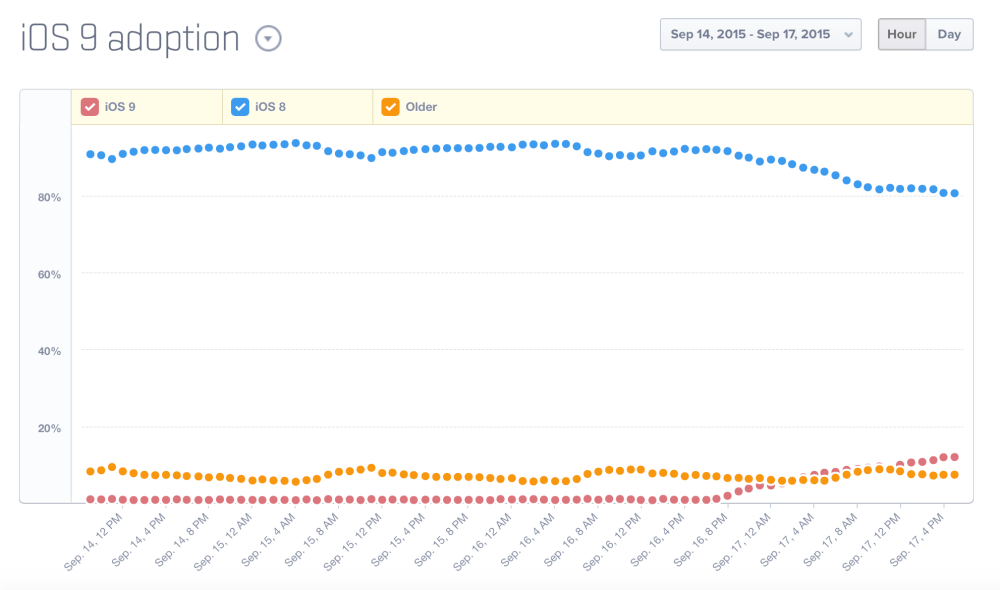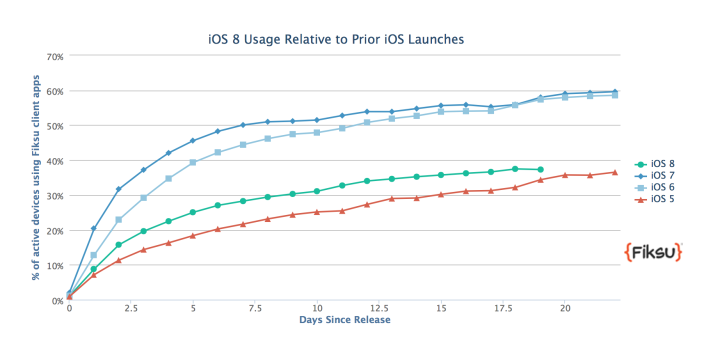iOS 9 hits 12% adoption in 24 hours, similar rate of uptake as iOS 8 in same period

iOS 9 has now been out for 24 hours now and the first usage data is in. According to analytics from Mixpanel, iOS 9 has crossed the 12% adoption mark of all iOS devices one day after launch. Although 12% is a good figure, it is actually down a bit from last year’s rate of adoption of iOS 8, which managed 16% device penetration during the same period. This is despite iOS 9 actually being easier to update due to lower storage space requirements, but it’s possible that early server hiccups led some users to delay updating. Mixpanel says iOS 9 and iOS 8 are currently reporting similar upgrade paths:
iOS 9 has received 12% adoption in the last 24 hours and is being adopted similar to iOS 8 last year. However, one issue for it being substantially slow compared to iOS 7 is that servers are having trouble keeping up right now as people update.
iOS 7 continues to dwarf both iOS 8 and iOS 9 in terms of initial adoption, reaching over 20% penetration in its first day of availability. Data from 9to5Mac’s audience is more impressive with over 50% of readers already on iOS 9.0. Obviously, our data has a tendency to be heavily biased upwards because of our audience demographics.


